Folk Dance
Traditional dance forms of Bengal

Folk Dance
Folk dances encompass diverse traditions, linking art with daily life and rituals. Raibenshe and Dhali were ancient war dances, serving as soldiers' physical and mental training. Chhau, a mask dance, doubles as a martial art form with its acrobatic maneuvers. Kathi, Lathi, Jhumur, and Dhamail, entwined with brata and wedding customs, express emotions through group performances and songs. Mukha, a ritualistic dance, appeases deities. Regional dances reflect rural life, from farming to festivals, and showcase indigenous communities' unique movements.
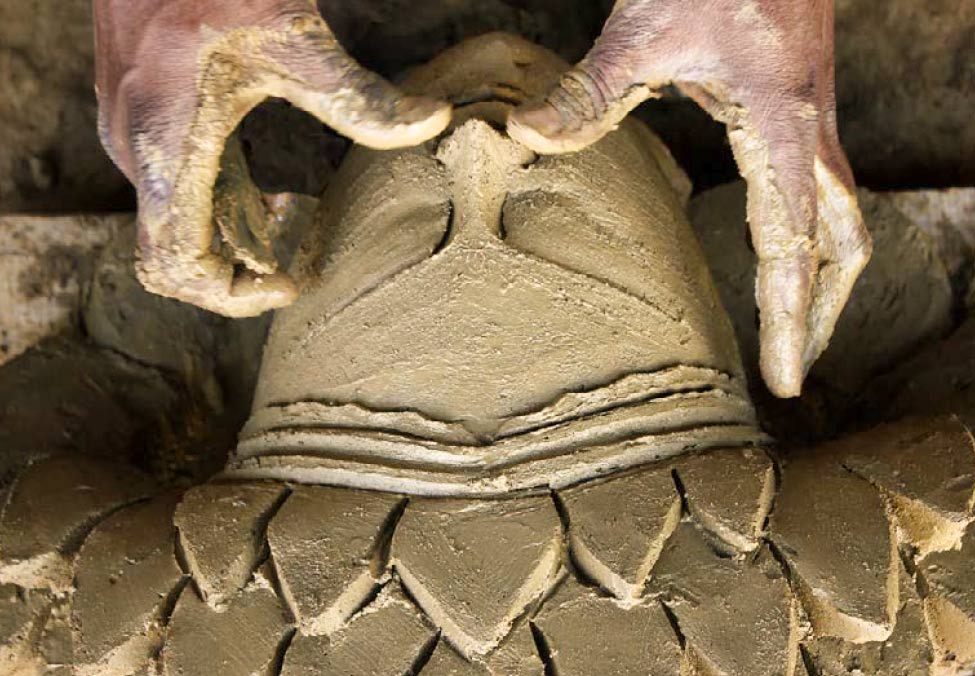
Chhau
Rooted in Eastern Indian culture, Chhau dance captivates with its vibrant artistry. This traditional dance form, encompassing martial arts, masks, and intricate movements, depicts mythological tales and historical valor. Originating from Bengal, Jharkhand, and Odisha, Chhau combines acrobatics, swift footwork, and elaborate costumes. The dance is characterized by its use of masks, portraying diverse characters from epics and folklore. With its ritualistic origins, Chhau remains a mesmerizing display of cultural heritage, blending storytelling, athleticism, and intricate choreography. Its evolution from ancient warrior training to a revered performance art continues to enrich the cultural landscape of the region.
Know moreChhau Hubs

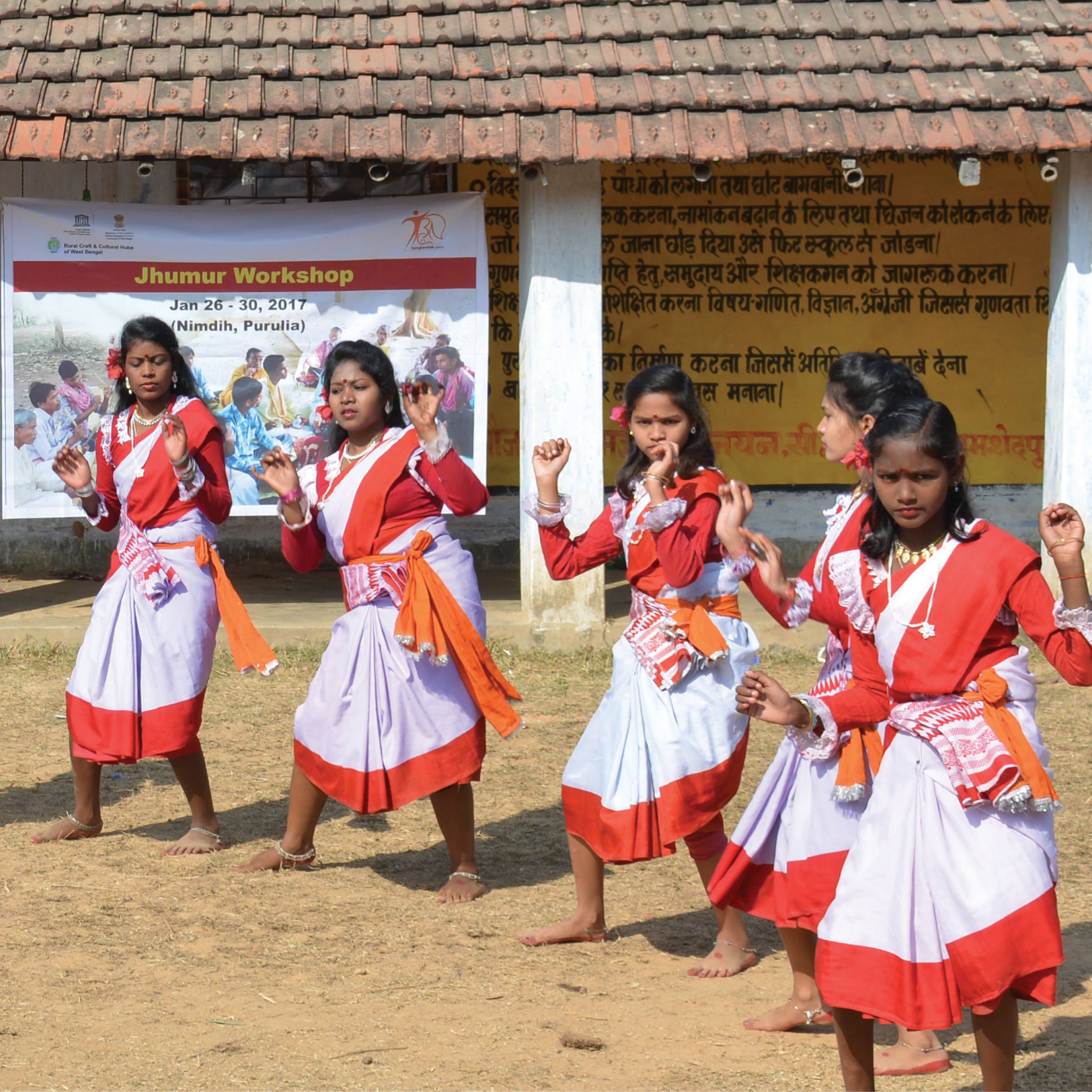
Jhumur
Originating from the rural landscapes of Bengal, Jhumur dance embodies the vibrant essence of local traditions. This folk dance, primarily performed during harvest festivities, reflects the jubilant spirit of rural life. Dancers, adorned in colorful attire, enact rhythmic movements expressing the joy of bountiful harvests through graceful steps and spirited gestures. Accompanied by traditional instruments like the 'dhamsa' and 'madal,' Jhumur dance captivates with its lively rhythms and symbolic gestures, weaving a captivating tale of communal celebration and the cultural vibrancy deeply rooted in the heart of Bengal's heritage.
Know moreJhumur Hubs


Raibenshe
Raibenshe is an ancient martial folk dance embodying valor and physical prowess. Traditionally performed by rural youth, it comprises intricate footwork, swift movements, and agile gestures akin to wartime tactics. With origins tracing back to soldierly training, this dynamic dance form symbolizes bravery and strength. Dancers adorned in distinctive attire, welding sticks and shields, enact rhythmic sequences, showcasing martial skills fused with cultural expressions. Raibenshe, a testament to Bengal's martial traditions, celebrates the warrior spirit through its vibrant choreography and storytelling, perpetuating the essence of valorous folklore.
Know moreRaibenshe Hubs
PASCHIM BARDHAMAN
PURBA BARDHAMAN
MALDA
DAKSHIN DINAJPUR
DARJEELING
UTTAR DINAJPUR
BIRBHUM
KALIMPONG
Know more

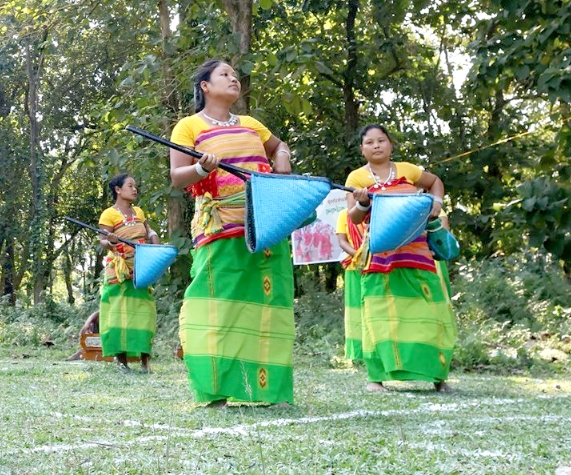
Rabha Song & Dance
Originating from West Bengal's locales, Rabha dances mirror the essence of the region's cultural vibrancy. These traditional dances, deeply rooted in the Rabha community, epitomize their cultural heritage. Marked by rhythmic movements and lively steps, the dance form embodies celebratory rituals and narratives, often accompanied by the beats of indigenous musical instruments like dhol and flute. These performances, adorned with colorful attire and symbolic gestures, encapsulate the spirit and identity of West Bengal's Rabha community, showcasing their unique artistic expression and cultural traditions within the region's rich tapestry.
Know moreRabha Song & Dance Hubs

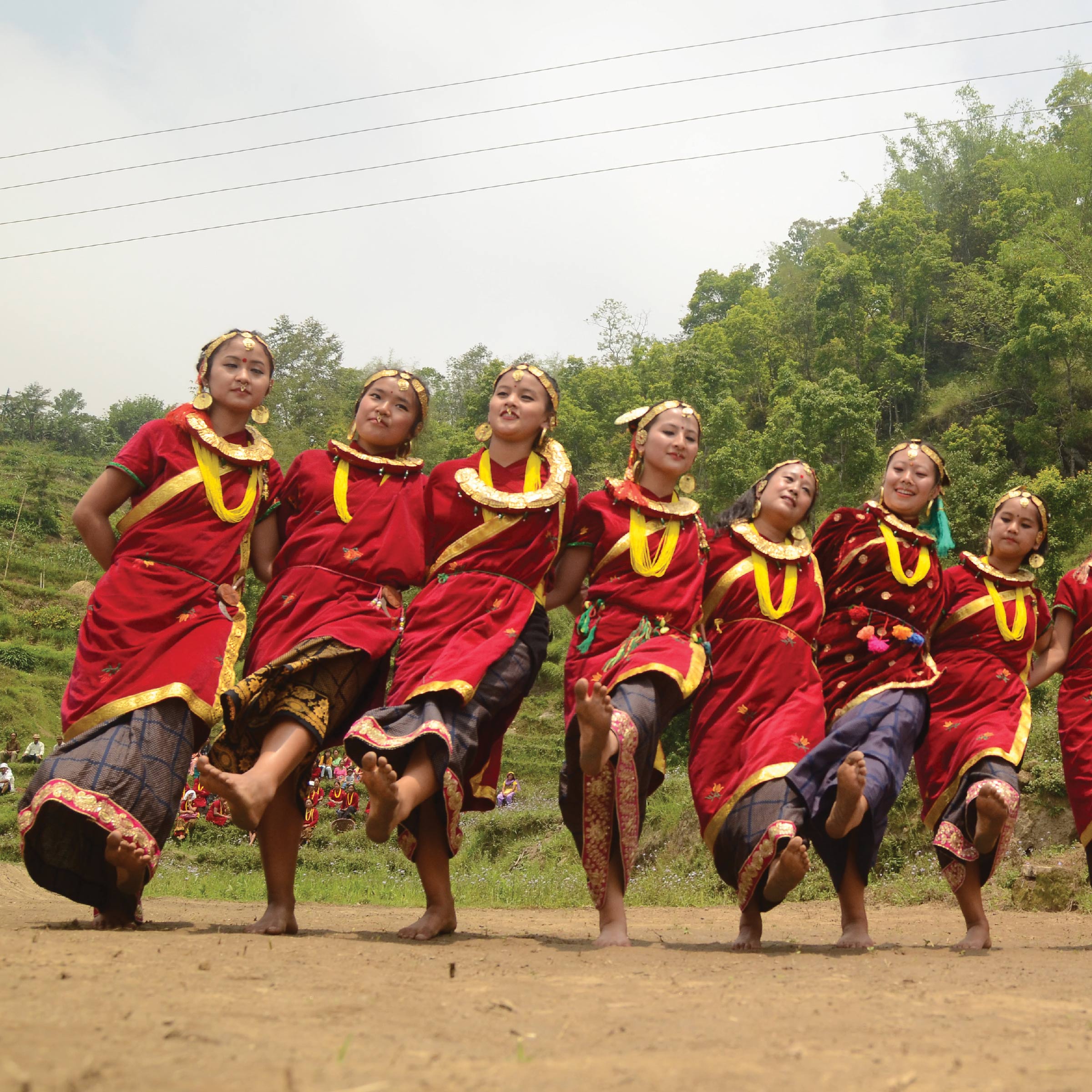
Adivasi Song & Dance
The vibrant ethnic communities of Darjeeling and Kalimpong bring forth a rich tapestry of traditions, folk dances, melodies, and celebrations. Their performances honor nature's elements, paying homage to the sky, earth, mountains, rivers, and forests. These artistic expressions celebrate ancestral legacies, mark new harvests, and rejoice in celestial phenomena like the full moon and rainfall. Rooted in Buddhism and Shamanism, the hills' folk songs and dances beautifully mirror the cultural unity among Himalayan communities, transcending geographical boundaries.
Know moreAdivasi Song & Dance Hubs

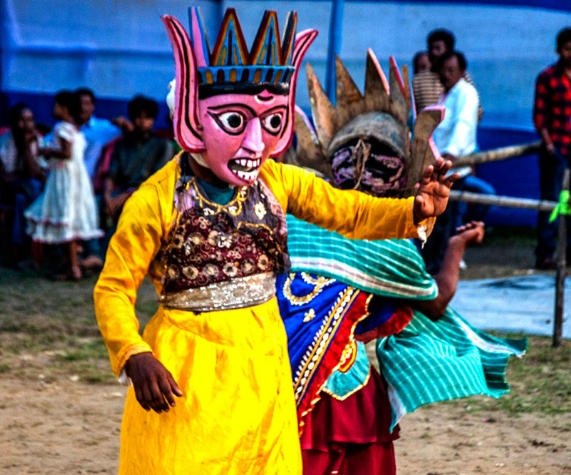
Gomira
Gomira, also known as Mukha Nach, comprises ritualistic dances where performers perceive each mask as a living face rather than a mere mask (mukhosh). This belief infuses life into the tradition. Originating from the Rajbanshi community, these dances occur between the Bengali months of Chaitra to Ashad (April—July) at village temples. They serve to honor the village deity, goddess Chandi. The Mukha Mela, an annual festival in the Mahishabathan region of Dakshin Dinajpur, celebrates the vibrant Gomira dance tradition.
Know moreGomira Hubs
BANKURA

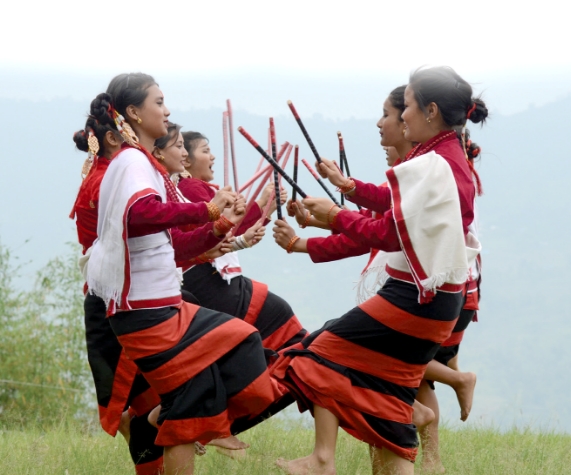
Song & Dance of the Hills
The vibrant ethnic communities of Darjeeling and Kalimpong bring forth a rich tapestry of traditions, folk dances, melodies, and celebrations. Their performances honor nature`s elements, paying homage to the sky, earth, mountains, rivers, and forests. These artistic expressions celebrate ancestral legacies, mark new harvests, and rejoice in celestial phenomena like the full moon and rainfall. Rooted in Buddhism and Shamanism, the hills` folk songs and dances beautifully mirror the cultural unity among Himalayan communities, transcending geographical boundaries.
Know moreSong & Dance of the Hills Hubs
